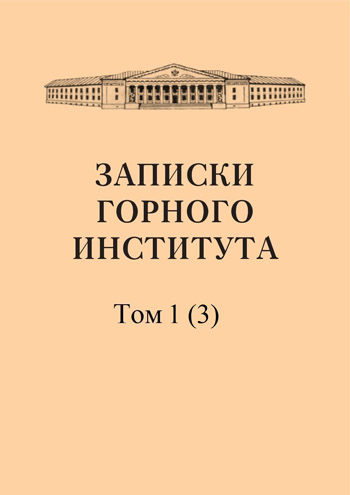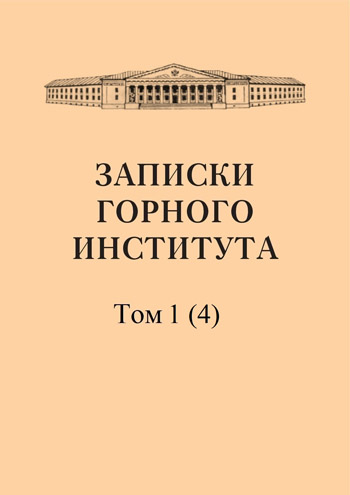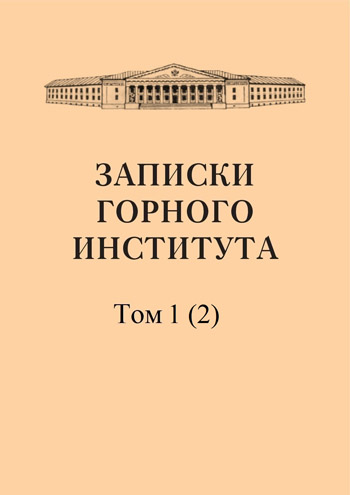-
Date submitted1908-03-07
-
Date accepted1908-05-08
-
Date published1908-09-01
About one transformation of the elliptic integrals
- Authors:
- I. P. Dolbny
We will the elliptic integral, the values of the arguments, and derive the required equation.
-
Date submitted1908-03-15
-
Date accepted1908-05-01
-
Date published1908-09-01
On reciprocal curves and surfaces
- Authors:
- Ye. S. Fedorov
By this general name we mean all those curves and surfaces that are represented in the geometry of harmonic segments. Indeed, in this geometry, every midpoint of a segment uniquely corresponds to both end points of this segment; consequently, whatever curve is represented in this geometry as a set of end points of segments, its points are always grouped into pairs that are harmonic with respect to the main orthogonal sphere O, and the end points are located on the radius of this sphere.
-
Date submitted1908-03-21
-
Date accepted1908-05-08
-
Date published1908-09-01
Spherical systems
- Authors:
- Ye. S. Fedorov
One of these systems or spherical geometries can be considered generally known, although I am not aware that anyone has categorically noted its complete parallelism or equality with the geometry of points on the plane. This geometry on the sphere introduces one limiting condition that it deals only with points on the sphere. Therefore, although its points occupy all three dimensions of space, it is essentially the same geometry of two dimensions (that is, the second stage), as is the corresponding geometry on a plane, in which the limitation is to consider only points on one plane. Despite a long line of first-class researchers of this mineral, starting with Brooke, who studied this mineral in 1824, its crystallization, actually the correct installation of its crystals, has up to now encountered significant difficulties. I can now make use for this purpose of an excellent specimen from Alston Moor, in the Museum of the Mining Institute, from which hundreds of crystals suitable for this purpose could be extracted. I extracted 15 crystals and subjected them to continuous measurement on a universal goniometer.
-
Date submitted1908-03-01
-
Date accepted1908-05-08
-
Date published1908-09-01
Barytocalcite and pseudomorphosis of barite on it
- Authors:
- Ye. S. Fedorov
Despite a long line of first-class researchers of this mineral, starting with Brooke, who studied this mineral in 1824, its crystallization, actually the correct installation of its crystals, has hitherto encountered significant difficulties. I can now make use for this purpose of an excellent specimen from Alston Moor, in the Museum of the Mining Institute, from which hundreds of crystals suitable for this purpose could be extracted. I extracted 15 crystals and subjected them to continuous measurement on a universal goniometer.
-
Date submitted1908-03-01
-
Date accepted1908-05-16
-
Date published1908-09-01
Natural etching figures on topaz
- Authors:
- Ye. S. Fedorov
During the radical revision and putting in order of the minerals of the Museum of the Mining Institute, which is now being carried out by A.E. Kupffer, I got an opportunity to get acquainted in detail with the figures mentioned in the title, which are sometimes developed with great clarity on a fairly large number of specimens from various deposits of this interesting mineral, so abundantly represented in the museum.
-
Date submitted1908-03-02
-
Date accepted1908-05-24
-
Date published1908-09-01
Crystals of the Mineralogical Museum
- Authors:
- Ye. S. Fedorov
Natural crystals are the most difficult object for the method of crystal-chemical analysis, and I must admit that my attempt to give the correct setting to all minerals turned out to be imperfect in many points. But it was precisely this imperfection that prompted the further development of criteria for correct installation, and pointed to the need to reconsider and individually study the crystals of many minerals.
-
Date submitted1908-03-05
-
Date accepted1908-05-12
-
Date published1908-09-01
About alloys of platinum and tin
- Authors:
- N. I. Podkopaev
Alloys of platinum series metals have only recently become the subject of systematic study. Until now, there are only isolated studies of various compounds of these metals. Meanwhile, the metals of this group, from a theoretical point of view, seem to be very interesting due to the greater variety of compounds they form, which are pointed out by various authors.
-
Date submitted1908-03-21
-
Date accepted1908-05-19
-
Date published1908-09-01
K2Cr2O7 crystals; their structure and twins
- Authors:
- D. N. Artemyev
Crystals of potassium dihydroxide were measured by Schabus (Wien. Ak. Veg. 1850) and he also stated a very perfect cleavage along {001} and less perfect along {100} and {010}. Potassium dichromate from aqueous solutions (t = + 20° C.) is released in well-formed crystals with growth planes {001} or {101}, which, as is known, belong to the pinacoidal class of triclinic system of cubic type.
-
Date submitted1908-03-30
-
Date accepted1908-05-29
-
Date published1908-09-01
A dubious twin of the Augite from Monte Russia
- Authors:
- Ye. S. Fedorov
Having specially studied pyroxenes, I came across, among other things, intergrown crystals resembling twin intergrowths. Let me present here the results of one such study, based on the numerical data of which the attached diagram was compiled.
-
Date submitted1908-03-26
-
Date accepted1908-05-27
-
Date published1908-09-01
Improving the criterion for correct installation of crystals
- Authors:
- Ye. S. Fedorov
The criteria used so far contained the main, fundamental drawback, which consisted in calculating the grid density of each given complex as an isotropic complex. Although the criterion with this drawback was used quite consciously, for the sake of simplicity, in view of the complexity of the operation of calculating the density of the grids, but, of course, there was always a desire to eliminate it, if only a way could be found to determine this density quite correctly, without resorting to simplifying, but still an erroneous assumption.
-
Date submitted1908-03-07
-
Date accepted1908-05-15
-
Date published1908-09-01
Drusoid from the river Slyudyanka
- Authors:
- V. I. Sokolov
From the Museum of the Mining Institute, a sample No. 169/3 with the label: “Bronzite from the river Slyudyanka” was transferred for research in the Mineralogical Cabinet. Two thin sections made from it showed that the sample is a rock, which, in fact, contains, as a component, rhombic pyroxene, close to bronzite. The rock itself presents some features in its composition and structure, which force to attribute it to the type of drusite rocks.
-
Date submitted1908-03-18
-
Date accepted1908-05-25
-
Date published1908-09-01
A case of secondary growth of primary porphyry field states. One new combination of twin quadruple laws. Twins along the first axis and perpendicular to it
- Authors:
- V. V. Nikitin
In one of the thin sections of quartz porphyry from the Vtoro-Blagodatny mine, I came across an interesting case of cracks in feldspar grains being filled with feldspathic substance of the same composition and in the same orientation. The rock is quite strongly altered: feldspars are abundantly strewn with muscovite dust. The thin section field is cut by several veins, apparently made of new growths. Moreover, depending on whether the vein cuts through the ground mass or feldspathic segregations, it is made either by an aggregate of feldspars and quartz or only by feldspars, with such a slight difference in orientation with the mineral of the grain cut through by the vein that it cannot be quantified. Feldspar veins are characterized by significantly greater transparency due to the absence of muscovite inclusions.
-
Date submitted1908-03-10
-
Date accepted1908-05-20
-
Date published1908-09-01
In memory of Vladislav Aleksandrovich Tyurin (1862-1908)
- Authors:
- I. Schreder
The first series of his works is about the influence on solutions of the physical forces of gravity and centrifugal force, on the one hand, and electromagnetic forces on the other. The second series of works is devoted to a critical analysis of the basic concepts of energy; it treats the energy of motion and radiant energy, the interaction of these types of energy, the basic principles and concepts of mechanics. In 1907, Vladislav Aleksandrovich was invited to teach thermodynamics at the Mining Institute, but his poor health did not allow him to continue the course that he had always dreamed of. The article highlights the scientific principles of V.A. Tyurin and provides a short list of his published works.


